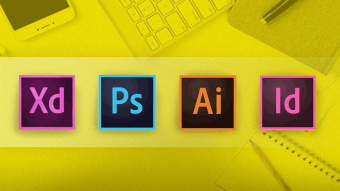Siemens Tia Portal Plc Programming Basics
Tags: PLC , Siemens TIA Portal
Create, Structure, Program, Download and Troubleshoot your First TIA Portal Step 7 PLC Application from Scratch
Last updated 2022-01-10 | 4.5
- At the end of this course- you will be able to program a TIA Portal PLC application from the ground up
- Build a proper structure for your PLC application in TIA Portal using TIA specific tools
- You will learn how to create function blocks and add ladder logic efficiently using TIA best practices
What you'll learn
* Requirements
* Basic PLC knowledge* Basic ladder programming knowledge
Description
Are you excited to get into the world of TIA Portal but you don't know where to start?
This course will allow you to add "TIA PLC Programmer" to your CV & start getting paid for your new skills.
Hi there! My name is Hans and I'm a full-time automation and controls engineer. I am here to help you learn the basic concepts, tools, and functions that you will need to create fully functional Step 7 PLC applications within the widely popular totally integrated automation solution, Siemens TIA Portal. By the end of this course, you will be able to structure and program TIA PLC applications using TIA specific tools and TIA best practices.
Eric: "This course is highly recommended to starter who would love to learn solid foundation of programming, hobbyist and also professionals who has no proper technique. I enrolled many PLC lectures in my account none of them impress me but this one is superb. I love the concept and technique that no one talk about. I would say the Instructor is very well experienced in the field."
Build a Strong Foundation in TIA PLC Programming with this Fully Featured Course
Create a new TIA Project
Add a SIMATIC S7-1200/1500 PLC to the application and configure the hardware
Structure a PLC application using TIA specific tools
Create function blocks and add logic to them using TIA best practices
Build data blocks using user-defined data types
Download the application and monitor code online
Troubleshoot faulty application code online
Powerful TIA Tools and Best Practices at Your Fingertips
Learning the fundamentals of TIA programming puts a powerful and very useful tool at your fingertips. TIA Portal is one of the leading automation platforms used in the industry, offering automation solutions for manufacturing companies all over the world.
Richard: "After many hours of TIA Portal training this has by far been the best one in terms of structuring the program, use of UDTs, comments and watching/forcing functions. This course showed everything in good detail, easy to follow and kept a high level of interest. I look forward to the HMI course from this! Great work from Hans. Thank you!"
Jobs in TIA development are plentiful. Learning the foundations of TIA programming will give you a running start in the market and a strong background to more easily pick up other automation solutions such as Rockwell, Beckhoff or B&R.
This course is aimed at people who already have a basic understanding of PLCs and ladder logic. Throughout this course of 40 lectures and over 2.5 hours of content, we will go through all of TIA Portal´s fundamentals and establish a strong understanding of the concepts behind each step of creating a structured and well-written TIA PLC application.
Abdelfattah: "This is an amazing course, Very well structured, The instructor is very knowledgeable! For me I am more familiar with Allen Bradley PLC environment, TIA was a dark area for me, This course has helped me a lot to find my way in this different environment. The fast Pace of the course really helped a lot to save my time and keep me motivated without distraction."
Active Participation
Throughout the course, I’ll invite you to participate in programming exercises, putting your newly learned skills into practice immediately. If you choose to participate (which I highly recommend) and complete all the exercises, you will have programmed a fully functional TIA PLC application by the end of the course!
Content and Overview
Project Creation
We start off this PLC programming basics course with a quick overview of the sample application that we´re going to use throughout our training videos.
We´ll learn how to create a new TIA project, how to set up the PLC hardware configuration and how to add input & output modules to our PLC rack.
Program Structuring
Next up, we´re going to focus on the structure of our PLC program. This step is essential because it will greatly simplify our actual programming afterwards.
We´ll start by breaking down our sample application into smaller, logical modules. Now that we´ve identified the different modules/building blocks of our sample application, we´re going to translate this modular structure to our TIA PLC programming environment. We´ll add program groups and main function calls for the different modules of our application and we´re going to build global data structures using data blocks and user-defined data types.
Adding Logic
With our PLC program structure in place, we are now going to add functionality/logic to our different modules. For each module, we will create a function block and we will optimize the block interface and the data transfer between the different function blocks. We will add functionality to each function block by programming structured ladder logic networks.
Throughout the course, we´ll put a lot of importance on using TIA best practices for each step of the process.
Testing
Our PLC program is finally complete and we´re ready to put it to the test! We´re going to download our application to a Siemens SIMATIC S7-1200/1500 PLC. Afterwards, I´ll walk you through the steps of editing code online, monitoring/modifying logic and data tags, and troubleshooting the application using watch tables, the force table, and data traces.
By the time you finish this course, you will be able to create, structure, program and test your first Step 7 PLC application from scratch using a wide array of TIA specific skills and TIA best practices.
Steve: "I feel this course has great information to offer, not only to beginning programmers but also to experienced programmers that perhaps use a different controller. Please continue to offer courses as you do an excellent job of explaining the proper steps and structure to coding."
Complete with a Link to a 21-Day Free Trial Version of TIA Portal V15.1, downloadable TIA sample applications, checklists and other practical documents. These sample applications and supporting documents will be a great help as we work our way through each lecture and concept - together.
Now it´s time to upgrade yourself and get started with TIA Portal!
Who this course is for:
- Software programmers or field engineers who would like to program TIA Portal using TIA specific skills and best practices
- Anyone with basic PLC and ladder knowledge who is eager to get started with TIA Portal
- A Simatic Manager Step 7 or a Rockwell programmer, starting off with their first TIA PLC application
- Anyone who would like to add "TIA Portal PLC programmer" to their portfolio
Course content
6 sections • 48 lectures
Introduction to this course Preview 02:09
This lecture is an introduction to the course . In this introduction, you get a short description of the course, who the course is designed for, and what you will be able to do by the end of the course.
You will also meet the instructor for the first time :-) (unless you´ve watched the promo video first...)
Sample application overview Preview 02:31
After completing this lecture, you will have an understanding of the sample application that we´ll be using throughout this course.
The resource section of this lecture contains a downloadable PDF with the application overview.
Software used in this course Preview 01:17
In this lecture, you will get a short overview of the software used in this course.
Activity: Retrieve the sample application Preview 01:18
After completing this activity, you will be able to retrieve an archived TIA application and open the application in TIA Portal.
The resource section contains a downloadable TIA project of the sample application used in this course.
Course overview Preview 00:52
Now let´s get started! Preview 00:45
This lecture closes off this section with a summary, and introduces you to the concepts of our next section about project creation.
Project first steps Preview 01:01
This lecture is an introduction to this section on project creation. You will get a short overview of the concepts taught in this section.
Section 2 overview Preview 00:37
Create a new project Preview 04:15
After completing this lecture, you will be able to create a new project in TIA Portal. Furthermore, you will be able to rename your project, and setup your PLC attributes.
Configure the hardware Preview 06:50
After completing this lecture, you will be able to add a profinet network to your project. You will also be able to add and configure input and output modules in your hardware configuration.
This lecture contains a downloadable PDF with an overview of the inputs and outputs used in our sample application.
Activity: Create a new TIA project Preview 00:39
After completing this activity, you will have created a new TIA project and configured the hardware.
In the resource section of this lecture, you can download a checklist that your can use when creating new TIA projects.
Manage your application Preview 03:28
After completing this lecture, you will be able to save your application and make a backup of your application.
Additional resources: My personal recommendations Preview 00:46
In this final lecture of this section, you get a short overview of what we´ve achieved together in this section of the course. Also, this lecture introduces you to the concepts that we´ll work on in the next section.
In the resource section of this lecture, you'll find a downloadable PDF with TIA best practices and my personal recommendations when creating and configuring a new project.
The importance of structure Preview 01:03
This lecture introduces you to the concepts taught in this section about program structuring.
Section 3 overview Preview 00:44
Application breakdown Preview 06:33
After completing this lecture, you will be able to break down your application into smaller, logical modules. You will be able to identify equipment and machine functions, and you will be able to recognize reusable program parts in an application.
This lecture contains multiple PDF downloads, which you can use as helping tools for this lecture, and the coming lectures in this course.
Build program groups Preview 06:50
After completing this lecture, you will be able to structure your program using program groups. Furthermore, you will be able to add main function blocks to your user program for machine modules and equipment modules.
Add global data blocks Preview 08:27
After completing this lecture, you will be able to create user defined data types and use them to build global data blocks.
Quiz: Program structuring
This little quiz will test your knowledge on program structuring best practices. Good luck!
Create input and output tags Preview 05:50
After completing this lecture, you will be able to add inputs and outputs to tag tables in your user program.
The recourse section of this lecture contains a downloadable PDF with a grouped overview of the inputs and outputs of the sample application.
Activity: Build your application structure Preview 00:30
In this activity, you get to structure a TIA program using program groups, main function blocks, inputs/outputs, and global data blocks.
This lecture contains a downloadable PDF checklist that you can use when structuring a program in TIA Portal.
Additional Resources: Worksheet Preview 00:12
This lecture provides you with additional resources in the form of a downloadable worksheet (PDF) that you can use as a helping guide when structuring your application.
Groundwork = Done! Preview 00:38
This lecture summarizes the basic concepts worked on so far in this course, and introduces you the concepts taught in the next section on programming.
Let´s get functional Preview 01:27
This lecture is an introduction to the concepts and principles taught in this section.
Section 4 overview Preview 01:03
Program the state handler Preview 14:41
After completing this lecture, you will be able to program a function block in TIA portal using TIA best practices.
In this lecture, we will program a function block for a simple machine state handler with a start,stop and a reset functionality.
Program the supply module Preview 07:31
After completing this lecture, you will be able to program reusable function blocks and call them cyclically in your user application.
In this lecture, we will program a function block for the supply module of our sample application.
Program the refill modules Preview 13:31
After completing this lecture, students will be able to program reusable function blocks and integrate them into a user application.
In this lecture, we will program a function block for the refill module of our sample application.
Quiz: Function blocks best practices
This quiz will test your knowledge on function blocks best practices. Good luck!
Add descriptions and comments Preview 06:49
After completing this lecture, you will be able to add descriptions to function blocks and comments to network titles, PLC tags and global data.
Compile the application Preview 03:33
After completing this lecture, you will be able to compile your user program. Furthermore, you will be able to use the compilation results for troubleshooting faults in the program.
Activity: Program function blocks Preview 00:32
In this activity, you get to program reusable function blocks from the ground up.
In the resource section, you´ll find a downloadable PDF with a checklist for programming function blocks.
Additional resources: Best practices Preview 00:07
This lecture provides you with additional resources in the form of a downloadable Best Practices PDF. This document contains TIA's best practices when programming function blocks.
Your application is done! Preview 01:30
This lecture is a summary of this section, and a transition to the next section where we´ll be using TIA's own PLC-simulator to download and test our application.
Going online Preview 01:04
This lecture gives you an overview of the concepts that we'll work on in this section.
Section 5 overview Preview 00:46
Download the application Preview 07:09
After completing this lecture, you will be able to download your TIA program to a PLC.
The resource section of this lecture contains the TIA program of the sample application used in this course.
Edit code online Preview 05:06
After completing this lecture, you will be able to edit code online. Furthermore, you will be able to interpret the online representation of a TIA program to detect any inconsistencies in the program code.
Monitor code and tags Preview 07:55
After completing this lecture, you will be able to monitor code in function blocks, and tags in data blocks and PLC tag tables. Furthermore, you will be able to create watch tables for monitoring a custom set of tags.
Modify tags - Statehandler testrun Preview 08:27
After completing this lecture, you will be able to modify tags in TIA Portal using watch tables and force tables. Furthermore, you will be able to test-run your application online using TIA's PLC-simulator (S7-PLCSIM).
Record data using traces - Refill sequence testrun Preview 13:33
After completing this lecture, you will be able to monitor custom data sets over time using traces. Furthermore, you will be able to test-run the functionality of your user application online.
Activity: Download and testrun Preview 00:39
In this activity lecture, you get to download the sample application and you get to test the functionality of the state handler by modifying tags in watch tables and forcing tags in the force table. Furthermore, you get to trace the different states of the state handler during the test-run.
Congratulations - You´ve made it! Preview 01:35
In this lecture, we celebrate YOU for completing this course. Furthermore, this lecture gives you some insights on where to go next after this course.
Bonus Assignment: Add a valve to the supply module Preview 01:23
In this bonus assignment, you get to add a valve to the supply module of our sample application.
Attached is a downloadable PDF containing the instructions for this assignment and another PDF with the breakdown of the bonus application.
Bonus Assignment: Solution Preview 10:25
In this lecture, you will receive the solution for the previous bonus assignment.
The resource section of this lecture contains the TIA program with the solution implemented.
Additional Resources: PDF´s and links Preview 01:05
In this lecture, you will receive additional resources in the form of useful TIA Portal links and downloadable PDFs on TIA best practices, TIA Portal keyboard shortcuts, and TIA programming guidelines.
Teaser: Siemens TIA Portal - HMI Basics Preview 03:01
In this lecture, you get and introduction to my follow-up course "Siemens TIA Portal - HMI Basics".
Thank you Preview 01:27
A thank you, from me to you, for taking part in this course.








 This course includes:
This course includes:













![Sales funnel courses and certification [2021] [UPDATED] Sales funnel courses and certification [2021] [UPDATED]](https://www.courses-for-you.com/images/uploads/thumbs/11-35.png)


